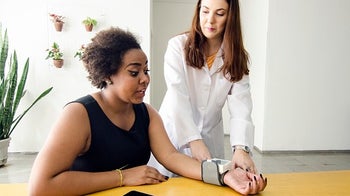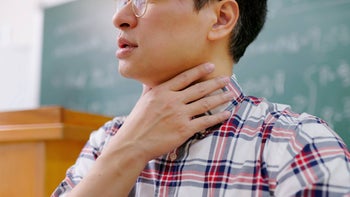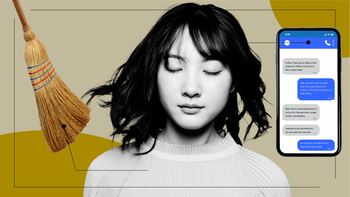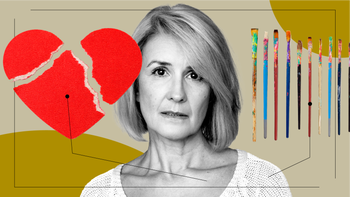
What Is the Best Medication for Teenagers With Anxiety?
Key takeaways:
Anxiety disorders are very common in children and teenagers.
In young people, they can cause a wide range of emotional and physical symptoms, including headaches, stomachaches, crying, and tantrums.
Anxiety in children and teens can be treated with therapy and/or medications.
The best medications for children and teens with anxiety are SSRIs. Other medications, like SNRIs and benzodiazepines, can sometimes be used to get symptoms under control.
Table of contents

Anxiety disorders are the most common psychiatric conditions that today’s youth face. You may have heard that more and more teens are experiencing anxiety, but even younger children can be at risk. According to the CDC, almost 1 in 10 children between ages 3 and 17 have been diagnosed with anxiety at some point. And in teens, almost 1 in 3 have had an anxiety disorder at some point.
It might be hard for parents to detect these disorders. Anxiety can sometimes look very different in children and teens compared to adults. And anxiety disorders can cause many different types of symptoms, too.
Fortunately, treatment can help. Therapy and medication are both good options for many children and teens with anxiety disorders. Read on for more information about the symptoms of anxiety disorders, which treatments work the best, and the pros and cons of different medications.
Search and compare options
What are the signs and symptoms of anxiety in children and teens?
One reason anxiety disorders can be missed in children and teens is because the signs and symptoms can be mistaken for typical illnesses or age-appropriate behavior. If you notice symptoms like these, especially if they develop suddenly, you may want to bring them up with your pediatrician:
Clinginess
Acting scared
Shortness of breath
Poor digestion
Muscle tension
Insomnia or trouble sleeping
Headaches or dizziness
Problems swallowing
Nausea or vomiting
Appetite changes
Crying
Tantrums or outbursts
Failing to speak
Freezing up
Avoidance of certain people, places, or activities
Poor school performance
Suicidal thoughts or behavior, even if not depressed
If a child or teen has these types of symptoms most days of the week, it may be a sign that they have an anxiety disorder. Keep in mind that some children and teens might be embarrassed about their feelings or not mention anxiety to their parents. Or their symptoms might just appear in certain environments — like at home, school, or when hanging out with friends.
Teens might also deal with anxiety in different ways, like acting out with drugs, alcohol, or sex. They might also seem less involved in social activities or school, or they may be reluctant to hang out with friends. Teens in particular might feel more comfortable admitting they have physical symptoms, like a headache or stomachache, compared to admitting other worries or fears.
What causes anxiety in children and teens?
Common anxiety disorders and anxiety-related disorders in children and teens include:
Separation anxiety disorder
Understandably, parents are often concerned when they learn that their child or teen has anxiety and will wonder what caused it.
It can be tough to pinpoint a single cause. But anxiety in children and teens may be related to:
Genetics: Some people, children included, are genetically “wired” to have certain health conditions, including mental health conditions like anxiety and depression.
Family history and/or household exposure: Even if there’s no genetic basis for a child to have anxiety, growing up in a household with someone who has anxiety or other mental health conditions can increase a child’s likelihood of developing the condition.
Difficult situations at home or school: Like in adults, challenging situations such as deaths, loss of friends, bullying, and other stressful scenarios can trigger anxiety in children. Abuse or neglect is also associated with anxiety.
Medical problems: Some medical illnesses can cause anxiety symptoms in children and teens. These include migraines, inflammatory bowel disease, asthma, thyroid problems, and more.
Alcohol and drugs: Though teen drug and alcohol use has gone down in the last decade, it’s still a problem for many teens. Using these substances can cause anxiety.
Social media: Many tweens and teens use social media. Though social media can be positive for many young people, it’s also linked to anxious feelings. Tweens and younger teens may be especially vulnerable.
A lack of sleep: According to the CDC, most tweens and teens aren’t getting enough sleep on school nights. Kids ages 6 to 12 should get 9 to 10 hours of sleep per night. Teens need 8 to 10 hours. Not getting enough sleep can cause mood changes, problems with concentration, and anxiety.
How do you treat anxiety in children and teens?
By some assessments, up to 80% of children with anxiety are not getting treatment for it. And when anxiety disorders go untreated, they’re more likely to last into adulthood.
Not getting treatment can also increase the risk of:
Depression
Substance misuse
Career problems
Suicidal behavior
Fortunately, there are many good treatments available. The most effective treatments usually involve some combination of cognitive behavioral therapy (CBT) and prescription medications.
Talk therapy
CBT, or talk therapy, is helpful because it equips children and teens with tools and strategies for reducing their anxiety on their own. CBT is often delivered by a therapist in sessions of about 12 weeks. It’s usually the first-choice treatment for children and teens with mild or moderate anxiety.
Medication
If your child or teen is diagnosed with an anxiety disorder, their pediatrician may recommend medication — especially if their symptoms are severe. Medication may be used for a brief period or as a long-term treatment depending on the specific situation.
According to the American Academy of Pediatrics, here are some things your provider will keep in mind when recommending a medication:
What is your child’s or teen’s diagnosis?
How old is your child or teen?
How well does the medication work?
What are the side effects of the medication?
How quickly will the medication start working?
Is your child or teen taking any other medications that could interact with a new med?
Can your child or teen swallow pills?
What are the best medications for anxiety in teens?
Read on for more details about medications commonly used to treat anxiety in children and teens.
SSRI antidepressants
For most children and teens with an anxiety disorder, SSRIs (selective serotonin reuptake inhibitors) are a good first choice. These medications seem to work well for many anxiety disorders, and they don’t have a lot of side effects. Some of these medications are FDA approved for childhood anxiety disorders. Others are used “off-label” in children and teens.
Commonly prescribed SSRIs for children and teens include:
Citalopram (Celexa)
Escitalopram (Lexapro)
Fluoxetine (Prozac)
Fluvoxamine (Luvox)
Paroxetine (Paxil)
Sertraline (Zoloft)
It can take about 2 weeks to notice improvement and up to 6 weeks to see the full anxiety-lowering effects of SSRIs. So be patient if you decide that your child or teen should begin taking this type of medication.
SNRI and other antidepressants
Other antidepressants can help treat anxiety in kids, too. These include SNRIs (serotonin-norepinephrine reuptake inhibitors) and tricyclic antidepressants. Though these medications also work well, they often come with more side effects. Because of this, they’re usually reserved for a second-choice or even third-choice option.
Examples of second- or third-choice antidepressants for anxiety in kids include:
Venlafaxine ER (Effexor)
Duloxetine (Cymbalta)
Clomipramine (Anafranil)
Imipramine (Tofranil)
Benzodiazepines
Benzodiazepines (“benzos”) are a type of short-term medication for anxiety. They treat anxiety by lowering certain types of activity in the brain that may be connected to anxious thoughts, feelings, and behaviors. Examples include:
Lorazepam (Ativan)
Clonazepam (Klonopin)
Alprazolam (Xanax)
Compared to antidepressants, benzos make anxiety go away very quickly — usually within minutes to hours. But even though they work well, they’re not a great long-term option. They’re linked to misuse and dependence. They can also have many side effects, like irritability and drowsiness.
Because of the risks and side effects, benzos are usually only used “as needed” in children and teens for managing occasional anxiety-provoking situations. They’re also sometimes used temporarily for a few weeks while waiting for a SSRI or SNRI to start working.
Other medications
There are several other medications that are sometimes used off-label in children and teens with anxiety. These medications are usually only used as an add-on medication or if other types of medication and therapy have not worked. They’re also sometimes used if an antidepressant isn’t a good option.
Examples include:
Diphenhydramine (Benadryl)
Doxylamine (Unisom)
Hydroxyzine (Atarax)
Propranolol (Inderal)
Are antidepressants safe for treating anxiety in kids and teens?
Yes, for many children and teens, antidepressants are a safe medication. But parents should know that antidepressants come with a “black box” warning for suicidal thoughts and behavior.
This means that young people who take these medications may have more suicidal thoughts, feelings, and actions in the first few weeks of taking them (or when their dose is increased). If your child will be taking an antidepressant, your healthcare provider will help guide you on how to monitor them for safety.
Can neurodevelopmental conditions like autism and ADHD cause anxiety?
Yes. Neurodevelopmental disorders like autism and ADHD can cause anxiety in children and teens — even though they’re not “officially” categorized as anxiety disorders.
Conditions linked to anxiety in kids include:
Learning disorder, like dyslexia
Intellectual disability (previously called “mental retardation”)
Speech, language, and communication disorders
Movement or tic disorders, like Tourette
Childhood-onset fluency disorder (stuttering)
Autism spectrum disorder
Attention-deficit/hyperactivity disorder (ADHD)
These conditions can lead to anxiety at home and school as well as in social situations or relationships. Keep in mind that it’s also possible to have a neurodevelopmental condition and an anxiety disorder at the same time.
Let’s take a closer look at anxiety in autism spectrum disorder and ADHD.
Can anxiety be a sign of autism spectrum disorder?
While autism spectrum disorder (ASD) doesn’t always involve anxiety, children and teens with ASD are more likely to have anxiety disorders than children without ASD. Most often, if a child is on the autism spectrum, anxiety will show up as:
A specific phobia or fear
Obsessive-compulsive disorder (OCD), where the child has obsessive thoughts and repetitive behaviors
Social anxiety, where the child may find it stressful to interact with others
Is anxiety a sign of ADHD?
Children with ADHD are more likely to have anxiety than children without ADHD. To understand why, consider some of the main symptoms of ADHD in children and teens:
Inability to focus
Lack of organizational and time-management skills
Trouble following instructions
Restlessness
For children and teens, these symptoms can cause internal stress as well as stress between the child and family members, teachers, and other adults in their lives. Persistent, chronic stress can increase the risk of developing an anxiety disorder.
What if your child has more than one health condition?
If your child or teen has anxiety along with ASD, ADHD, or another health condition, their pediatrician might consider different treatment options. Treatment for anxiety will then be part of a more comprehensive treatment plan that includes managing your child’s other conditions.
In situations where anxiety is triggered or worsened by another condition like ASD or ADHD, addressing the triggering condition can help to manage the anxiety disorder, too.
The bottom line
Anxiety is a common mental health problem for children and teens. As a parent, it’s important to be aware of the signs and symptoms of anxiety. That way, you can reach out for help if needed. Though anxiety is common, fortunately there are many good treatments available that work and are safe for kids — including therapy and medications.
Antidepressants, benzodiazepines, and antihistamines, are just some of the potential medications for getting your child’s symptoms under control. If you’re concerned about anxiety in your child, reach out to their pediatrician. They can help you figure out whether your child has an anxiety disorder or other health condition. Together you can decide on a treatment plan that’s the right fit for them.
Why trust our experts?


References
Aguirre, R. S., et al. (2019). Mental health disorders and hyperthyroidism in the pediatric population. Pediatrics.
American Academy of Child and Adolescent Psychiatry. (n.d.). Anxiety disorders: Parent’s medication guide. American Psychiatric Association.
American Psychiatric Association. (n.d.). Highlights of changes from DSM-IV-TR to DSM-5.
Anxiety and Depression Association of America. (n.d.). Children and teens.
Centers for Disease Control and Prevention. (2020). Sleep in middle and high school students.
Centers for Disease Control and Prevention. (2023). Children’s mental health.
Falla, K., et al. (2022). Anxiety and depressive symptoms and disorders in children and adolescents with migraine: A systematic review and meta-analysis. JAMA Pediatrics.
Federal Register. (2013). Change in terminology: “Mental retardation to “intellectual disability”. National Archives.
Green, S. A., et al. (2015). Symptoms and development of anxiety in children with or without intellectual disability. Journal of clinical child and adolescent psychology: The official journal for the Society of Clinical Child and Adolescent Psychology, American Psychological Association, Division 53.
Holcombe, M. (2022). Teens say their experience on social media is better than you think. Here’s why. CNN Health.
Howard, J. (2018). What’s the average age when kids get a social media account? CNN Health.
Hughes, V. (2022). Does social media make teens unhappy? It may depend on their age. The New York Times.
McCarthy, C. (2019). Anxiety in teens is rising: What’s going on? healthychildren.org.
McMakin, D. L., et al. (2015). Sleep and anxiety in late childhood and early adolescence. Current Opinion in Psychiatry.
National Institute of Mental Health. (n.d.). Any anxiety disorder.
National Institute on Alcohol Abuse and Alcoholism. (2022). Underage drinking.
National Institute on Drug Abuse. (2022). Most reported substance use among adolescents held steady in 2022.
Panchal, N., et al. (2022). Recent trends in mental health and substance use concerns among adolescents. Kaiser Family Foundation.
Stapersma, L., et al. (2018). Systematic review with meta-analysis: Anxiety and depression in children and adolescents with inflammatory bowel disease. Alimentary Pharmacology and Therapeutics.
Tourette Association of America. (n.d.). Anxiety management in the classroom.
U.S. Preventive Services Task Force. (2022). Anxiety in children and adolescents: Screening.
White, S. W., et al. (2009). Anxiety in children and adolescents with autism spectrum disorders. Clinical Psychology Review.
For additional resources or to connect with mental health services in your area, call SAMHSA’s National Helpline at 1-800-662-4357. For immediate assistance, call the National Suicide Prevention Lifeline at 988, or text HOME to 741-741 to reach the Crisis Text Line.

























